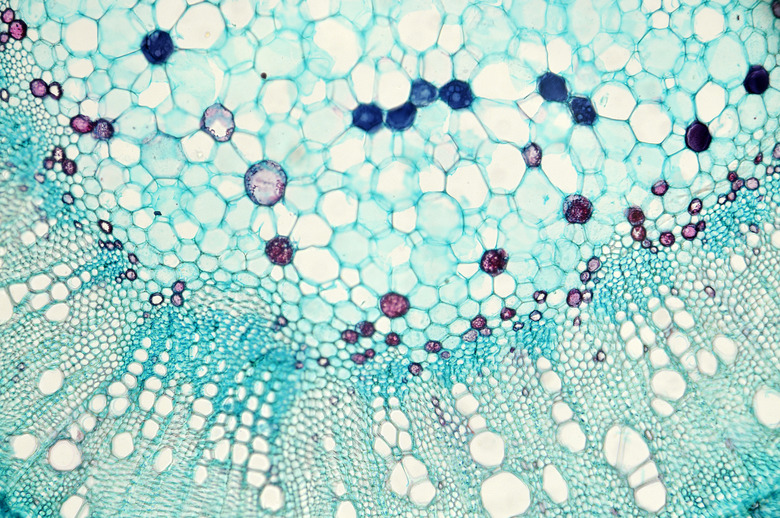Examples Of Substances That Use Facilitated Diffusion
Cellular activity is the basis of all life. Even the largest and most complex organisms on Earth rely on the biological processes carried out by trillions of microscopic cells. Individual cells fulfill their biological functions by transporting various materials to and from their multicellular hosts. Some substances that cannot readily pass through the cell membrane use a fascinating transport method called facilitated diffusion.
TL;DR (Too Long; Didn't Read)
Some large, polar, electrically charged or lipid-insoluble molecules require assistance to diffuse across the plasma membrane. Facilitated diffusion using carrier proteins or ion channels allows these important molecules (like glucose) to cross the membrane.
The Skin of a Cell
The Skin of a Cell
A thin layer called the plasma membrane encloses cells and maintains the integrity of the cell by containing cellular fluid, or cytoplasm, and specialized structures called organelles. The plasma membrane also regulates the substances that enter or exit the interior of the cell. Cells have a variety of methods for moving molecules through the cell membrane, and these methods fall into two general categories: passive transport and active transport. A cell must expend energy to accomplish active transport while passive transport does not require cellular energy. Facilitated diffusion is an example of passive transport.
Molecules Flow from High to Low
Molecules Flow from High to Low
Diffusion is the process by which molecules naturally flow from areas of high concentration to areas of low concentration. Some molecules, however, cannot freely enter or exit a cell under the influence of a concentration gradient because they are not compatible with the cell's plasma membrane, which is less permeable to molecules that are large, polar, electrically charged or lipid-insoluble. With facilitated diffusion, the cell can "help" some of these molecules pass through the plasma membrane by binding them to special carrier proteins or by opening channels between the cell and the surrounding environment.
Glucose Facilitation
Glucose Facilitation
Glucose is a sugar molecule that serves as the fundamental energy source for many cells. Outside the cell, the bloodstream constantly supplies glucose while inside the cell, cellular metabolism continually consumes glucose. As a result, the concentration of glucose outside the cell remains higher than the concentration inside the cell, but the glucose molecule is too large to pass through the plasma membrane unassisted. Thus, the cell provides glucose-specific carrier proteins that bind to glucose molecules and allow them to enter the cell.
Ion Channels
Ion Channels
Facilitated diffusion via carrier proteins is common for a variety of larger molecules that cannot easily pass through the plasma membrane. Examples include fructose and galactose, which are monosaccharides like glucose; amino acids, the building blocks of proteins; and nucleosides, which are necessary for DNA and RNA synthesis. A different type of facilitated diffusion involves channel proteins, which do not bind to molecules but rather open a channel that allows for the rapid transport of smaller molecules and ions, such as:
- sodium
- potassium
- calcium
- chlorine
Cite This Article
MLA
West, Joseph. "Examples Of Substances That Use Facilitated Diffusion" sciencing.com, https://www.sciencing.com/examples-substances-use-facilitated-diffusion-12695/. 21 May 2018.
APA
West, Joseph. (2018, May 21). Examples Of Substances That Use Facilitated Diffusion. sciencing.com. Retrieved from https://www.sciencing.com/examples-substances-use-facilitated-diffusion-12695/
Chicago
West, Joseph. Examples Of Substances That Use Facilitated Diffusion last modified August 30, 2022. https://www.sciencing.com/examples-substances-use-facilitated-diffusion-12695/
